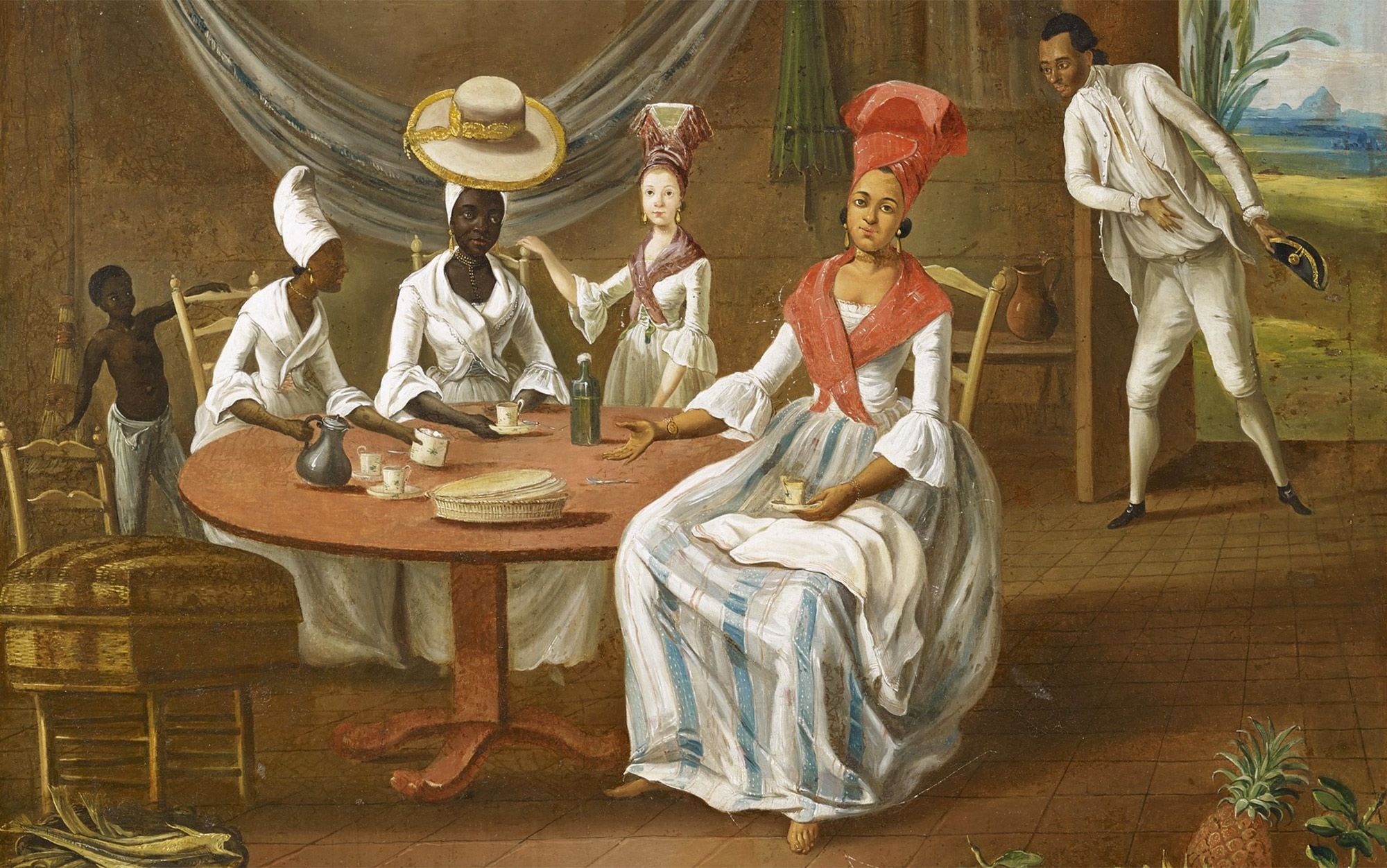On prejudice
Aeon
2018-03-05
Blake Smith, Postdoctoral Fellow
European University Institute, Florence, Italy

Famille Métisse (1775) by Marius-Pierre le Masurier. Photo courtesy Musée du Quai Branly-Jacques Chirac/RMN |
An 18th-century creole slaveholder invented the idea of ‘racial prejudice’ to defend diversity among a slave-owning elite
n 1791, Julien Raimond published one of the first critiques of racial prejudice. Raimond was a free man of racially mixed ancestry from the French colony of Saint-Domingue (today the country of Haiti), and his essay ‘Observations on the Origin and Progress of White People’s Prejudice against People of Colour’ argued that legal discrimination against people of African origin resulted from psychological biases. Raimond’s work was the first sustained account of how racial prejudice operates – and how it might be eliminated. Today, the idea that unconscious biases permeate individual psychology, prompting discriminatory behaviours and perpetuating social inequality, is central to discussions of race in politics, academia and everyday life. But this idea was the product of a specific 18th-century moment, with surprising and troubling motivations behind it.
Raimond was an activist for the rights of people of colour. In 1789, he left his home in Saint-Domingue just before the outbreak of the French Revolution. He went to Paris to lobby the government to grant equal status to free people of African origin. In Paris, Raimond joined a circle of radical thinkers and politicians who believed that racial equality had to be part of the emerging Revolution. But Raimond was no opponent of slavery. On the contrary, while his allies argued for its abolition, Raimond insisted that racial equality and abolition of slavery had nothing to do with each other. The first page of his treatise claimed that a cabal of ‘white plantation-owners … have cleverly conflated the cause of people of colour with that of slaves’. Raimond, in fact, wanted to preserve slavery. He believed that eliminating racial prejudice would bring white and non-white slave-owners together in a united front against enslaved Africans. He drew on the pro-slavery arguments of white plantation-owners. Raimond’s idea that there is such a thing as ‘racial prejudice’ and that discrimination is rooted in this psychological phenomenon originated in these plantation-owners’ defences of slavery.
Raimond’s ideas strike many present-day readers as bizarre and hypocritical. After all, he pioneered modern critiques of racial prejudice while also defending slavery. Most people today presume that racism led to slavery, and that slavery and racism were practically synonymous. But in the 18th century, this was not so clearly the case. From Raimond’s perspective, as an 18th-century creole slave-owner, slavery and racism were distinct, and it seemed urgent to disentangle them. Slavery, after all, had existed for thousands of years, while modern racial discrimination, Raimond held, was something recent, contingent and reformable. Like many thinkers of his era (including many of the United States’ Founding Fathers), Raimond saw the world divided between an elite of propertied men and a servile mass of labourers. He saw that the power of a tiny elite would be more resilient if the privileged included people of different colours…
Read the entire article here.
